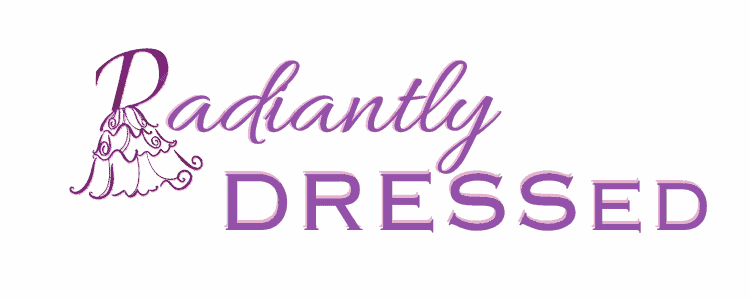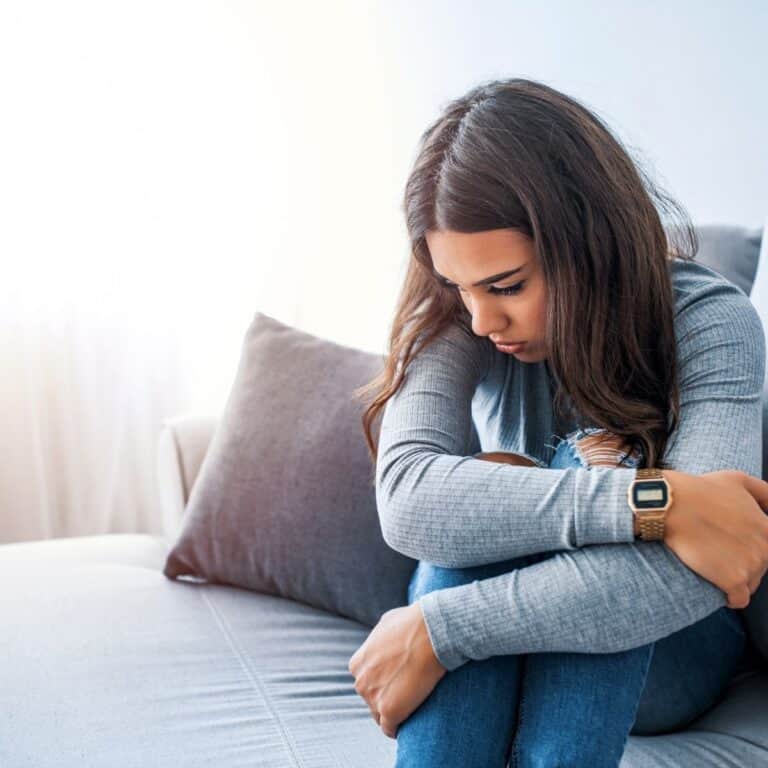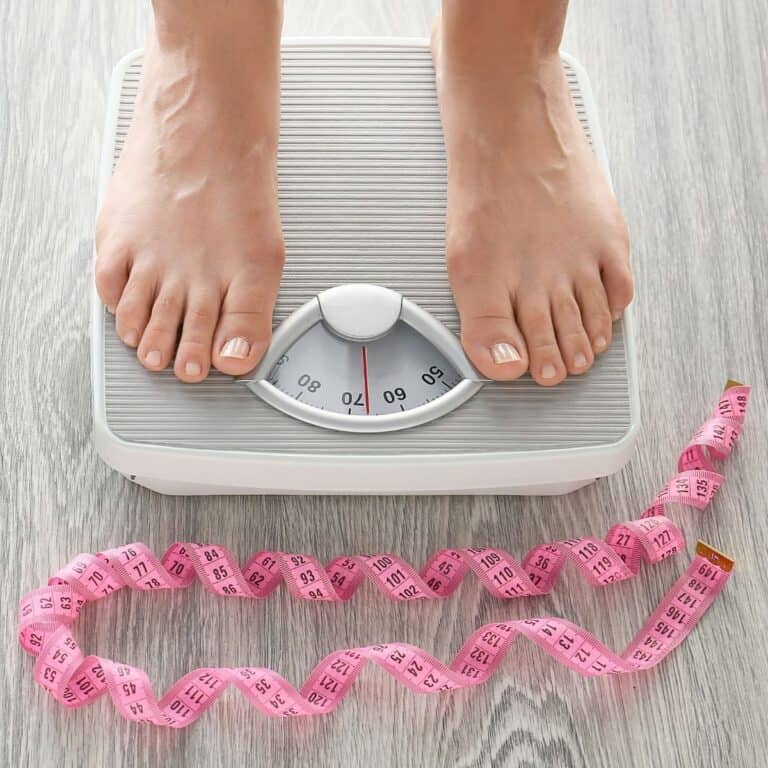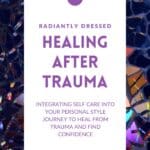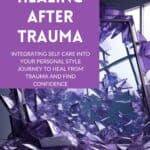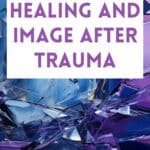Trauma self care is an important but often overlooked part of your personal style journey.

What do you see when you look in the mirror? Are you happy with that image or does it make you feel bad about yourself? Today I’m going to talk about the relationship between trauma, self-image, and your personal style. A subject which is really near and dear to my own heart and my own experiences. I hope that you really enjoy this deep dive into how our mindset is shaped by the experiences of our past.
Today is 9/11 and if you are in the USA and are over the age of 20, this day probably has significant meaning for you. Think for a minute, where were you when you found out about the news on 9/11? I can definitely remember where I was and I think that it’s because this experience, this situation, this event that happened is one of the defining historical events of my generation.
I am very on the edge of Generation X and close to the Millennials and I think that it’s probably true for both people. I remember where I was. I was headed to work as a pharmacy technician and I either ran out of gas or I got a flat tire on the way. I ended up calling my ex because he worked at a car repair place and he was the only person I knew that could get to me and help me out.
He came and he told me, “Oh my goodness, have you heard it?” I was like, no, what are you talking about? Have I heard what? He told me that an airplane had just flown into the World Trade Center in New York City. I didn’t really think much about it because I was at an age and in a life stage where current events didn’t really matter much to me.
I went to work and I remember all morning long taking breaks to go into the break room, taking turns to go into the break room so that we could watch the news unfold. It’s just such a memorable experience. I bring this up because obviously today is 9/11 and that is something that we are remembering today in America. I also bring it up because it’s a definition and it’s an illustration of trauma.
That’s what I’m going to talk about today, trauma. Now, I know that for a lot of people when we talk about trauma, people think that it has to be some big bad event, something like 9/11. Some huge traumatic event that is inexplicably changing your life, changing, your experience and your mindset.
The truth is that trauma doesn’t have to be a big thing. They call those big Ts or big traumas. They don’t have to be big things. They can actually be small things. I’ll just share a little bit of my story. I was actually diagnosed with PTSD last November. I thought that PTSD or any kind of trauma response had to be a result of these big bad experiences.
I have a couple that are pretty notable. They’ve worked together in conjunction, and they’re different enough and they affect different areas of my life. I didn’t really see the crossover and I became intrigued by the study of trauma and how it affects us. The truth is that while I was going through this and I was learning about this, it’s something that I have been seeing in my clients over and over again.
Not in a big trauma way all the time, but some of them definitely have big traumas. They have histories of abuse and neglect, and many of them have very dysfunctional family stories. I have clients with eating disorders, clients with chronic illness. I keep seeing the manifestation of these experiences and traumas come forth when we talk about our style.
Earlier this summer, I took action because I kept seeing this come up in my clients. It’s something that we keep talking about. Honestly, I am not at all the greatest when it comes to comforting people and knowing the right thing to say. I say the worst things to people and I don’t mean to. I just don’t know what to say. I have my biblical faith. I can pray for you and I can spit out some scripture.
I’m really good at that. But that isn’t always helpful. As I became more privileged to see this with my clients, I felt so unequipped and I did not want to even do more damage. Something that I never want to be a part of, is causing more harm and more damage just because I don’t know the right thing to say.
Earlier this summer, I started a certification program for a trauma support specialist. I’m about halfway through and it’s been really interesting. Some of the stuff that I’m sharing today are things that I’ve learned while I’m going through this, studying on my own, and obviously having this experience myself. This is a short, deep, maybe quick dive into the role of trauma in our self-image and how we can use style as a healing pathway, but also how trauma affects our sense of style as well.
join the style membership for fashion frustrated women
The Radiant Woman Adventure
Understand your personal style, choose clothes that flatter your body, and look amazing every day. Get help with color analysis, style essence, body type, and building an easy simplified closet with a personal stylist in your pocket.
Table of Contents
Trauma Self Care: Defining Trauma
Before I go into any other content, I do want to talk just a little bit more about the concept of defining trauma. We think it’s these big bad things that happen in our life and that can definitely be trauma, but trauma is not simply defined as some big bad things or some life-changing traumatic event. It can actually be a factor of complex trauma, which is ongoing, repeated small traumas over time.
There’s actually this great quick and short questionnaire that you can do. It’s called the Adverse Childhood Events. It scores a number of things that have happened to you as a child. A lot of these things are ongoing small, insidious type things, but people who have at least a score of four on this assessment are more likely to experience long-term problems in their health, their mental health, and their overall wellness.
These things don’t just hit once and go away like a big trauma. It doesn’t hit you once and then you immediately get over it. These are the things that take long-term healing, and I’m going to talk about that as well.
Trauma Self Care: Trauma and Self Image
I want to talk about how our trauma affects our self-image. There’s this incredible book called The Body Keeps the Score. They have found that big traumas and little traumas, this complex ongoing buildup of life stressor situations over time, don’t just affect how we think. It actually affects the health of our bodies.
If you think about it, the health of our body has a direct correlation with how we view ourselves, our self-image, our image of self, our perception of who we are, how we see ourselves, how we look in the mirror, what we think about ourselves, and what we say about ourselves. All of these things are self-image essentially.
I want to give a couple of examples, hard examples. Things that aren’t easy to deal with. These are probably some of the bigger traumas that we’re talking about. If you have lost a child, whether it’s a miscarriage or you’ve had a child loss, that is affecting how you perceive your body, which affects your self-image.
If you have an eating disorder or history of an eating disorder, that affects how you view your body, how you view yourself, and the things you think and say about yourself. If you grew up in a home where you were constantly criticized for how you looked or how much you weighed or didn’t weigh, that is still affecting how you perceive yourself.
Since personal style is simply a manner of presenting ourselves and our bodies and who we are to the outside world, it’s obviously apparent that any traumas we’re carrying, any long-term ongoing mindset issues about who we are, how we look and our self-worth is going to come out and how we get dressed, how we show up, and how we interact with those around us.
Trauma Self Care: Healing Trauma
One of the goals when it comes to personal style is being confident in your clothing, being confident in who you are, being self-assured, and feeling like you are expressing your inner self authentically on the outside. All of these things are a part of our personal style journey, but if you don’t have that confidence, it’s really hard to manifest it.
You can’t just fake it till you make it. That stuff in your head is ongoing stuff, it’s still going to keep happening. Like I said before, healing is such a journey. It’s not something that you can take medication for and you’re going to get better. As somebody who is going through the healing journey for PTSD, it is not a one-and-done.
The strange thing that happens, especially when you have complex issues that have gone on for a long time, is that each thing that you tackle sometimes brings up more things. You’re constantly finding new ways of managing your stressors, healing those old wounds, finding new coping mechanisms, and reframing the things that happen to you to think about these experiences in different ways.
If you feel like your life is being impacted by this, I strongly urge you to get help from a true professional in the area of mental health, support networks, or therapy. One of the best things for trauma and anxiety is a process called EMDR, which is basically a really amazing way of resetting the memories in your brain so that they’re no longer activated as an immediate trauma response.
I have been doing this and it has been so impactful. I had some really severe triggers to specific situations and things that happened, and ways that people would touch me that were completely innocuous and completely innocent. Sometimes even the way my kids would touch me just completely would set me off because of the things that happened to me. I have found so much healing and my life has changed so much.
I want you to know that there is amazing help and amazing resources for you to do the deep healing work that you need to do to function better in your life overall. Having said that, I am going to share with you some great tools that can help you in relation to your style and your self-image journey.
To help you better align that image that you see in the mirror that is often a reaction and a manifestation of the things we’re carrying, the traumas we’ve had, the little traumas, the big traumas, and all the little negative experiences that we’ve had over time to help you manage some of those things in this realm of personal style.
Trauma Self Care: 8 Dimensions of Wellness
The first thing I want to share with you is a little bit of information about the wellness wheel, which is a tool to help manage wellness moving forward. When we look at trauma and we look at how we’re trying to heal trauma, we want to look at creating wellness as a whole person. We’re not looking at just putting a Band-Aid on the situation.
We want to heal, we want to get better, we want to move forward. The wellness wheel is one really great way of looking at all the dimensions that help us to be a healthier person in a fully holistic sense. The wellness wheel is a mental health tool that was developed by a mental health organization and it comprises eight different areas or dimensions of wellness.
I’m going to share them with you and talk a little bit more about the ones that I use with clients, especially in this new membership that I’ve just started. This is something that we’re doing as well to try to bridge the gap between self-image and personal style. The first area on the wellness wheel is emotional, which is coping effectively with life and creating satisfying relationships.
Then financial, which is satisfaction with current and future financial situations. Social wellness is developing a sense of connection, belonging, and a well-developed support system. Spiritual wellness, which I find to be the most important, is expanding our sense of purpose and meaning in life.
Since this is a Christian business, I’m a Christian business owner, I run programs for Christian women, and we start with spiritual wellness. The next one on the list is occupational wellness, which is personal satisfaction and enrichment derived from one’s work or the things that we’re involved in. This doesn’t have to be just work, it can be volunteer work or hobbies or whatever God has called you to do.
Physical, is recognizing the need for physical activity, diet, sleep, and nutrition. I believe that your personal style kind of falls into this one too. There’s environmental, which is good health, pleasant stimulating environments, and support wellbeing. Physical and environmental wellness are the two where your personal style fits in.
The eighth one here is intellectual well-being, which is recognizing creative abilities and finding ways to expand knowledge and skills. If you think about personal style as a creative outlet, it can fall in this area as well.
Trauma Self Care: Personal Style as Self-Care
When we look at the wellness wheel, we’re actually talking about self-care in these eight different areas. I want to point out that self-care is not selfish care. Self-care is being a good steward of who God created you to be, and the things he gave you, and managing them responsibly. I have to say that every time I talk about self-care because I don’t want you guys to think I’ve gone woo or out into left field.
I’m not promoting selfish care to the extent or at the expense of your family, your calling, or who God’s created you to be. I’m simply promoting stewardship in managing who you are and who God created you to be. I want to touch just on a few of these areas that I mentioned were applicable to your style journey and give you a few tips on these, then I’m going to wrap this up because I feel like it’s getting really long and it’s really deep.
I mentioned that there are really about four areas of the wellness wheel where our style comes into play. I’m going to talk about those in the order that I personally find them to be most important. There is no ranking or hierarchy to the wellness wheel itself. However, I feel that when you’re applying it to different areas of your life, you do have to consider that some parts are more applicable than others.
I could probably go through every part of this wellness wheel and tell you how it applies to your overall self-care, your well-being and how you feel about yourself. Because again, we have to get dressed, we have to go out in public, sometimes we have to talk to people, and there’s no way of getting around the fact that we are interacting, we are presenting ourselves, we are asking people to love us, sometimes judge us.
Unfortunately, that’s the way it works. But you know, we are out there and our external self is not permanent. It is a very temporal state. Who we are on the inside is infinitely more valuable and important, but we live in a physical world and we have to live within those guidelines.
The first thing I teach is spiritual well-being because the reality is that in all of the things that we’re talking about, trauma is a mindset– how you feel about yourself. God is the only one that can really heal those things. Being plugged into him and the Bible and your spiritual well-being is the first step every single time. You can do nothing apart from God. His grace is sufficient in your weakness.
All of these things, biblical truths, have got to be there. It’s the very first thing, and that’s why I talk about biblical definitions of beauty, who God says we are a lot because we have to find that truth and we have to rest on that truth. We have to be so married to it that it is part of who we are.
We don’t question those things. We have to accept them fully, as the honest biblical truth. It has to be part of who we are. The second thing I usually talk about is our physical well-being, because in my personal experience I have found that when I am managing my body, my health, and my general wellness in this area, my self-image is so much better.
It doesn’t have to necessarily be because I’ve lost weight or because my clothes fit better, although those are great side effects and everybody’s happy when their clothes fit just a little bit better. What happens is that when you are taking care of yourself, when you are getting enough sleep, when you are eating healthy food, when you are moving your body mindfully and in honor of who you are as a person and in a way that resonates with you obviously feel better.
When you feel better, your clothes feel better and you feel better in your body overall. You feel a sense of achievement, a sense of control over your body, which is aging without your input. It feels good to know that we are being responsible and we have a little bit of control over how our body responds, reacts, and performs on a day-to-day basis.
The next area really impacted on the wellness wheel for our style journey is the environmental area. The way I like to think about this is your environment doesn’t have to be outside in nature, although that is definitely part of the wellness wheel. Your environment is anything around you.
That includes your home, which houses your closet, which houses your clothes that you have to manage. This is one of the reasons why I talk about capsule wardrobes, minimalism and having less, and being mindful about how much you own, making your choices easier. All of these things are part of environmental wellness when it comes to our personal style journey.
I did mention the intellectual area as being part of it because it’s our creative pursuits and for some people getting dressed is just a necessity and they don’t really enjoy the creative aspect. For others of us, the creative aspect is really fun. Putting together different colors and different outfits having fun with our wardrobe, expressing who we are in different ways.
This can be another area where self-care and personal style can come together to promote wellness. I know I said I was only going to touch on those four, but I’m going to go ahead and hit the other four because I want you to see that paying attention to your self-image and your personal style can support your wellness in all these different areas.
When we support our wellness and improve our overall well-being, we’re coming closer to healing those things that hurt us so much and that causes us to feel less than. I want you to stop feeling less than I want you to feel good in who you are, who God created you to be, and the person that you’re becoming. I want you to feel that freedom.
Freedom in Christ and freedom in who you are. This is one great tool that I know that can do that for you. Back to those other four things. Emotional is the satisfying relationships that also comes into social. Think about this, you look in the mirror, and you get dressed in the morning. It takes you 20 minutes, you’re frustrated, you’ve been throwing clothes on the floor, and you’ve got a pile to clean up later.
Your emotional state is already going downhill because you’ve got too much to manage. You think poorly of yourself, you look in the mirror, you feel negative, and your emotional state is already on a downward spiral at the very beginning of your day. Getting a grip on your personal style, healing your self-image, and healing those wounds inside you in the way that you present yourself can be a huge change to how you start your day every day.
Financial goes right back into environmental because it has that stewardship portion. How are we managing our money, our budget for clothing, and being responsible with our finances and what God has given us? How we shop, and how we declutter all fit into the financial area of social wellness.
This is a big one for a lot of people, a lot of women mostly not men. Men don’t do this very much. But for women, we tend to get dressed for other women. We are impressing other women most of the time. I will often pay far more attention to what I’m wearing to go out with a group of friends than I would to go out to dinner with my husband.
Because I see my husband a lot. He gives me compliments at random times when I feel like I do not look good right now. It’s just different. We’re trying to impress other women. It’s a comparison issue. Our personal style is a part of our social wellness. Finally, let’s talk about occupational.
For some of you, this is not going to be as much of an area, but for many of you, how you look and how you dress is a direct has a direct effect on your trajectory in your career. It’s funny for me because this is my job. My occupational wellness is related to the job that I do very specifically.
That was a hard lesson for me, getting sucked into Instagram and comparing myself to what other people in the industry are doing and trying to just pave my own path and cut my own trees down along the way. For some of you how you look has a direct effect on whether you get promotions and whether your boss thinks you’re capable. Think about it this way, if your kids are in school and you want to be on the PTA, do the other moms think you’re capable?
Here’s the thing, I am so passionate about this because the reality is that I didn’t know this was a thing until I knew it was a thing. Then it was so obvious to me. I can remember the very first time it hit me how impactful our history is and how our traumas affect us. This was with a client that I had no idea about her history.
To this day, I still don’t know what it was, but I remember sitting there with her and talking about just some style stuff. When you go on the style journey with me, I lead you through some deep water sometimes and you have to jump in the deep end. You have to dig through some of this ugliness inside because it’s there and it’s stopping you from being the person that you were meant to be.
I remember sitting there and it was one of those more profound lessons we were digging through. She was so uncomfortable and I can remember the stress on her face. It just stood out to me. So well, I can remember how she was usually very articulate and she froze in her words and she was stumbling over what she was saying.
I could see the stress in her neck as she just started to rub her face in a way that I could tell was so anxious. It was that first moment to me when I got off that call and I walked into the living room and I just sat there. My husband asked what was going on with me. I answered that I just never realized how much our style and what we think about ourselves are impacted by this mindset issue.
I’ll be honest with you, I used to hate the word mindset. I used to think it was just like woo thing for people who couldn’t get themselves together and couldn’t manage themselves. Mindset is a great word for it because everything that we come to in our style journey is literally a reflection of what is happening in our minds and in our hearts.
The only way to get through, it’s to go through it. It may be a deep valley for some of you. And it may take you into deeper valleys that you don’t want to deal with. I’ve seen that happen before too. I’ve seen people just hit a wall in their style journey because there’s something there that’s too big and they just can’t deal with it.
Final Thoughts on Trauma Self Care
I want to say that if you are in this process and you’ve been trucking along, maybe you’ve gone through color analysis and you’re really starting to dig into your personal style, and you’re thinking everything’s fine, it may very well be fine. But at some point, your mindset, your thought processes, or your heart position in these areas is going to hit you.
I have come to realize that when it comes to healing our self-image, whether it’s big traumas, little traumas, or some mean girl comments from being a teenager. Whatever it is that you’re holding onto it’s going to hit you at some point. No matter who you are or where you are, you’re going to have to deal with it.
Whether it’s at the beginning of your journey or the middle of your journey, or five years from now when you still can’t figure out why decluttering is so hard and you still can’t stop shopping, it’s there. It’s going to be there until you stare it head-on in the face. I would love to help you with this.
I would love to cheer you on and give you tools and resources to help you because the faster you heal your self-image, the more and better results you’re going to get with your wardrobe. You are here because you don’t want to feel frumpy, you want to be confident, you want to look good in your clothes, and you want to enjoy getting dressed.
I remember asking last year what ladies in my community wanted from their wardrobes. Everybody said they wanted to look put together. Which is sort of a vague thing, but everybody really wants that thing. They want to get compliments, feel good in their clothes, look good in their clothes, and they want some style tips. But there’s so much underneath this that’s such a deep process.
I am humbled and privileged every time I sit down with a client who shares something with me that is so deep, so real, so pivotal, and important. I cry with my clients on a regular basis when they share these things with me because I’m so touched. I know on my end too, that who we are on the inside is messy and hard sometimes.
We want to be a functional version of ourselves. To be the best version that God has created us to be. We want to be good moms and great wives. We want to be remembered as somebody who hears “well done and my good and faithful servant”. We want our children to rise up and call us blessed. It’s not just the clothes, it’s never ever just the clothes.
I want to encourage you that you can succeed. You can have the closet you want, be the mom you want, be the wife you want, and be the go-getter that you want to be. You can be all the things that God has called you to be. If you want help with your clothes and getting dressed, and if you want to learn how to love the version of you that God is creating and take all of that good stuff that he’s putting on the inside and make it come out on the outside, then I am here for you.
Related Christian Mindset Articles

Trauma self care will help you see how events from your past deeply influence your self-image and personal style transformation.
Stacey is the owner and creator behind Radiantly Dressed. She is a certified image consultant and AICI member focusing on creating simplicity in wardrobes via color and style.

